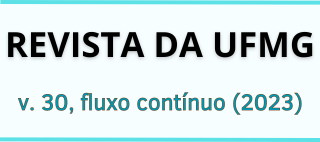Preste atención
la rápida evolución del procesamiento del lenguaje natural y dónde se quedó
DOI:
https://doi.org/10.35699/2965-6931.2023.47510Palabras clave:
modelos de lenguaje, aprendizaje profundo, procesamiento natural del lenguaje, inteligencia artificialResumen
Este artículo analiza la evolución de los modelos basados en la atención en el procesamiento del lenguaje natural (PNL) en un tono informal, comenzando en 2003 y culminando en las arquitecturas de "transformadores" que conocemos desde 2017. Explicamos cómo los "transformadores" lograron resolver la importante "referencia" para el razonamiento de sentido común en Inteligencia Artificial debido a su pre-entrenamiento. Además, investigamos el paralelismo entre el concepto de "esencial" ("lo que realmente importa") en la comprensión del lenguaje humano, según lo propuesto por Roger Schank, un veterano de PLN, y las "incrustaciones" que ahora se emplean en el aprendizaje automático. En el artículo, discutimos un problema bien conocido con estos modelos, las llamadas "alucinaciones". Este fenómeno destaca la lucha de los modelos para distinguir los hechos de la ficción, lo que requiere más investigación para mitigar su impacto. Enmarcamos este problema en el contexto del trabajo de David Lewis, argumentando que plantea un desafío fundamental a los modelos de lenguaje.Descargas
Citas
BAHDANAU, D.; CHO, K.; BENGIO, Y. Neural Machine Translation by Jointly Learning to Align and Translate. 2016. Disponível em: https://arxiv.org/abs/1409.0473.
BENGIO, Y. et al. A neural probabilistic language model. Journal of Machine Learning Research, v. 3, n. Feb, p. 1137-1155, 2003.
BENGIO, Y.; DUCHARME, R.; VINCENT, P.; JANVIN, C. A neural probabilistic language model. Journal of Machine Learning Research, v. 3, p. 1137-1155, 2003.
BENNETT, S.W.; AONE, C.; LOVELL, C. Learning to tag multilingual texts through observation. In: SECOND CONFERENCE ON EMPIRICAL
METHODS IN NATURAL LANGUAGE PROCESSING, 2., 1997, Providence. Proceedings. Providence: Morgan Kaufmann Publishers, Inc, 1997. p. 109-116.
BOWMAN, S. R.; ANGELI, G.; POTTS, C.; MANNING, C. D. A large annotated corpus for learning natural language inference. 2015. Available at: http://arxiv.org/abs/1508.05326.
BROWN, T. B.; MANN, B.; RYDER, N.; SUBBIAH, M.; KAPLAN, J.; DHARIWAL, P.; NEELAKANTAN, A.; SHYAM, P.; SASTRY, G.; ASKELL, A.;
AGARWAL, S.; HERBERT-VOSS, A.; KRUEGER, G.; HENIGHAN, T.; CHILD, R.; RAMESH, A.; ZIEGLER, D. M.; WU, J.; WINTER, C.; HESSE, C.;
CHEN, M.; SIGLER, E.; LITWIN, M.; GRAY, S.; CHESS, B.; CLARK, J.; BERNER, C.; MCCANDLISH, S.; RADFORD, A.; SUTSKEVER, I.; AMODEI, D. Language models are few-shot learners. ArXiv:2005.14165, 2020.
DAGAN, Ido. Recognizing textual entailment: Rational, evaluation and approaches. Natural Language Engineering, v. 15, n. 4, p. i-xvii, 2009.
DAVIES, Ernest. Winograd schemas and machine translation. 2016. Disponível em: https://arxiv.org/abs/1608.01884.
DAVIES, Ernest; MORGENSTERN, Leora; ORTIZ, Charles L. The first Winograd Schema Challenge at IJCAI-16. AI Magazine, v. 38, n. 3, p. 97-98, 2017.
DEVLIN, J.; CHANG, M. W.; LEE, K.; TOUTANOVA, K. BERT: Pre-training of Deep Bidirectional Transformers for Language Understanding. 2018. Available at: https://arxiv.org/abs/1810.04805.
GURURANGAN, Suchin; SWAYAMDIPTA, Swabha; LEVY, Omer; SCHWARTZ, Roy; BOWMAN, Samuel R.; SMITH, Noah A. Annotation Artifacts in Natural Language Inference Data. 2018. Available at: https://arxiv.org/abs/1803.02324.
LEVESQUE, Hector. The Winograd Schema Challenge. In: AAAI SPRING SYMPOSIUM, 2011, Palo Alto. Anais. Palo Alto: AAAI, 2011.
LEVESQUE, Hector. On our best behaviour. In: INTERNATIONAL JOINT CONFERENCE ON ARTIFICIAL INTELLIGENCE, 2013, Beijing. Anais. Beijing: IJCAI, 2013.
LEVESQUE, Hector. Common Sense, the Turing Test, and the Quest for Real AI. Cambridge, Massachusetts: The MIT Press, 2017.
LEVESQUE, Hector; DAVIES, Ernest; MORGENSTERN, Leora. The Winograd Schema Challenge. In: PRINCIPLES OF KNOWLEDGE
REPRESENTATION AND REASONING, 2012, Rome. Proceedings. Rome: KR, 2012.
LEVY, O.; GOLDBERG, Y. Neural word embedding as implicit matrix factorization. In: ADVANCES IN NEURAL INFORMATION PROCESSING SYSTEMS. Anais. 2014. p. 2177-2185.
LEWIS, D. Counterpart theory and quantified modal logic. Journal of Philosophy, v. 65, n. 5, p. 113-126, 1968.
LEWIS, D. On the Plurality of Worlds. Oxford: Blackwell, 1986.
LEWIS, D. Truth in Fiction. American Philosophical Quarterly, v. 15, n. 1, p. 37-46, 1978.
LIU, Y. et al. RoBERTa: A Robustly Optimized BERT Pretraining Approach. 2019. Available at: https://arxiv.org/abs/1907.11692.
MIKOLOV, T. et al. Distributed representations of words and phrases and their compositionality. In: ADVANCES IN NEURAL
INFORMATION PROCESSING SYSTEMS, Anais. 2013. p. 3111-3119.
MIKOLOV, T. et al. Efficient estimation of word representations in vector space. 2013. Disponível em: https://arxiv.org/abs/1301.3781.
OPEN AI. GPT4 Technical Report. ArXiv:2303.08774, 2023.
PENNINGTON, J.; SOCHER, R.; MANNING, C. Glove: Global vectors for word representation. In: CONFERENCE ON EMPIRICAL METHODS
IN NATURAL LANGUAGE PROCESSING, 2014. Proceedings. 2014. p. 1532-1543.
RADFORD, A.; WU, J.; CHILD, R.; LUAN, D.; AMODEI, D.; SUTSKEVER, I. Language models are unsupervised multitask learners. OpenAI Blog, v. 1, n. 8, 2019.
RADFORD, A.; WU, J.; CHILD, R.; LUAN, D.; AMODEI, D.; SUTSKEVER, I. Language Models are Unsupervised Multitask Learners. OpenAI Blog, v. 1, n. 8, 2019. Available at: https://cdn.openai.com/better-language-models/language_models_are_unsupervised_multitask_learners.pdf.
RAJPURKAR, Pranav; ZHANG, Jian; LOPYREV, Konstantin; LIANG, Percy. SQuAD: 100,000+ Questions for Machine Comprehension of Text. In: CONFERENCE ON EMPIRICAL METHODS IN NATURAL LANGUAGE PROCESSING, 2016, Austin, Texas. Anais. Austin, Texas: Association for Computational Linguistics, 2016. p. 2383-2392.
RYAN, M. L. Possible worlds, artificial intelligence, and narrative theory. Bloomington: Indiana University Press, 1991.
SAKAGUCHI, K.; LE BRAS, R.; BHAGAVATULA, C.; CHOI, Y. Winogrande: An adversarial Winograd Schema Challenge at scale. In: AAAI-20
TECHNICAL TRACKS 5, 34, 2019. p. 05.
SCHANK, R.; ABELSON, R.P. Scripts, plans, goals and understanding: An inquiry into human knowledge structures. New Jersey: Erlbaum, 1977.
SCHANK, R.C. Tell Me a Story: A New Look at Real and Artificial Memory. 1st ed. New York: Atheneum, 1990.
TAYLOR, W. "Cloze procedure": A new tool for measuring readability. Journalism Quarterly, v. 30, n. 4, p. 415-433, fall, 1953.
VASWANI, A. et al. Attention is all you need. In: ADVANCES IN NEURAL INFORMATION PROCESSING SYSTEMS. Anais, 2017. p. 5998-6008.
WILLIAMS, A.; NANGIA, N.; BOWMAN, S. A Broad-Coverage Challenge Corpus for Sentence Understanding through Inference. In: CONFERENCE OF THE NORTH AMERICAN CHAPTER OF THE ASSOCIATION FOR COMPUTATIONAL LINGUISTICS: HUMAN LANGUAGE
TECHNOLOGIES, 2018, New Orleans. Anais. New Orleans: Association for Computational Linguistics, 2018. p. 1112-1122.




